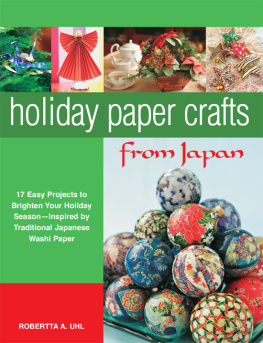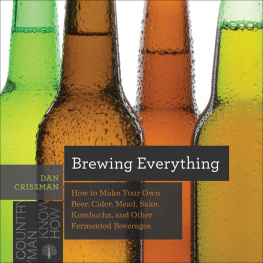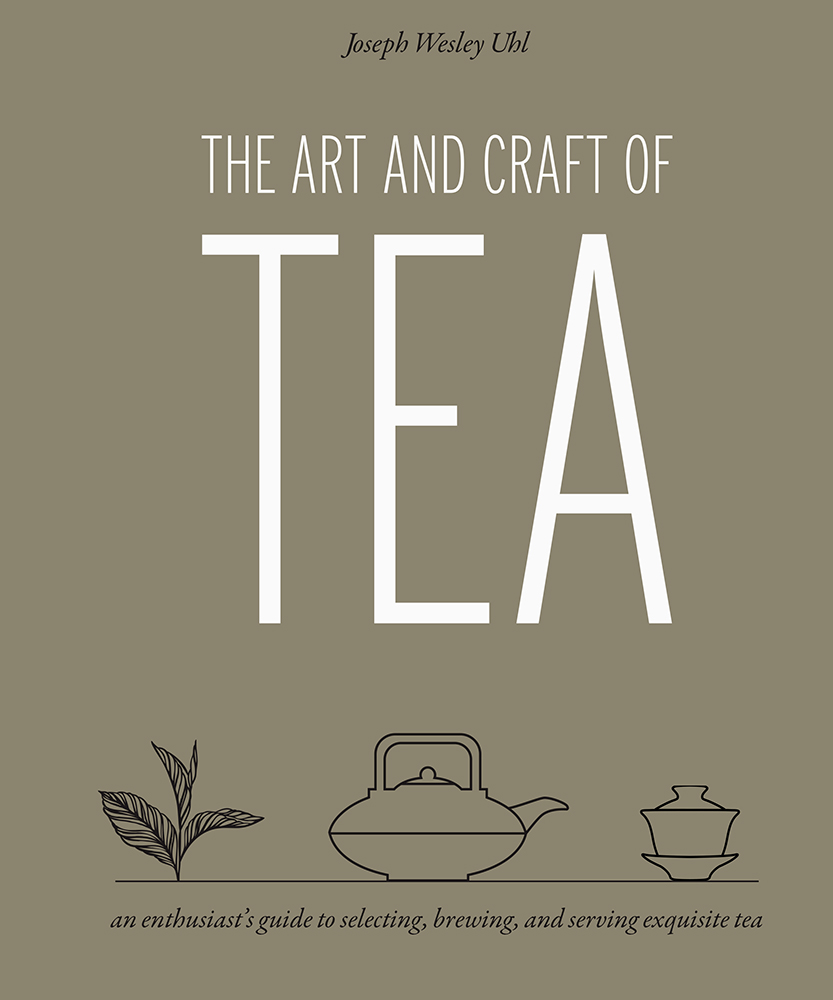Joseph Wesley Uhl
THE ART AND CRAFT OF
TEA

an enthusiasts guide to selecting, brewing, and serving exquisite tea


2016 Quarto Publishing Group USA Inc.
Text and Photography 2016 Quarto
Publishing Group USA Inc.
First published in the United States of America in 2016 by
Quarry Books, an imprint of
Quarto Publishing Group USA Inc.
100 Cummings Center
Suite 406-L
Beverly, Massachusetts 01915-6101
Telephone: (978) 282-9590
Fax: (978) 283-2742
Visit our blogs at
www.QuartoKnows.com
All rights reserved. No part of this book may be reproduced in any form without written permission of the copyright owners. All images in this book have been reproduced with the knowledge and prior consent of the artists concerned, and no responsibility is accepted by the producer, publisher, or printer for any infringement of copyright or otherwise, arising from the contents of this publication. Every effort has been made to ensure that credits accurately comply with information supplied. We apologize for any inaccuracies that may have occurred and will resolve inaccurate or missing information in a subsequent reprinting of the book.
Digital edition: 978-1-62788-315-3
Hardcover edition: 978-1-63159-049-8
Digital edition published in 2015
Library of Congress Cataloging-in-Publication Data
Uhl, Joseph, author.
The art and craft of tea : an enthusiasts guide to selecting, brewing, and serving exquisite tea / Joseph Uhl.
pages cm
ISBN 978-1-63159-049-8 (hardback)
1.Tea.I. Title.
TX817.T3U39 2015
641.3372--dc23
2015025839
Design: Burge Agency
Photography: Marvin Shaouni
To Erwin R. Uhl, for directing me to plant seeds and saplings wherever I damn well please.
CONTENTS
Guide
PREFACE
As one of the most consumed beverages in the world, tea is virtually everywhere. But, what exactly is tea? Is it a drink? A diet drug? A cure for cancer? A gateway into mysticism? A skin balm? Is it a flower? An herb? Or, is tea just another consumer-packaged product?
I wrote this book to start a dialogue about how to define tea, to help clarify fact from myth, and to outline the importance of tea not only in world history but in our own lives. My hope in writing this book is that it sheds light on much of teas complexities.
If you are a serious tea drinker, a casual tea drinker, or someone merely curious about one of the worlds great crafted agricultural products, this book should provide something of value and interest. Throughout the book, I tried to remain aware that teas power and magic is not found in its leaves, in the liquid it creates, or in our relationship to these things, but in its ability to help us feel connected to our shared humanity.
PART 1: TEA
WHAT IS TEA?
Tea started in the northern foothills of the Himalayan mountains where people chewed the leaves of the Camellia sinensis plant as medicine. Over the past few millennia, the Chinese invented techniques and technologies that allowed them to preserve these leaves. In so preserving the leaves, the Chinese created technologies that not only allowed the leaves to last longer but allowed tea to be transported greater distances. With the increased transportability of tea, new villages began cultivating tea and began creating their own proprietary techniques and technologies for the processing of tea. This long history of creating, sharing, and innovating created the various types of teas with which we are now familiar as well as the hundreds if not thousands of varieties of tea that can be enjoyed todayall from a single leaf!
THE HISTORY OF TEA AS A CULTURAL ICON
It seems an unwritten rule that a book about tea shall begin with a series of dates and events representing teas history.
Such an exercise, however, misses the mark in helping us understand what tea is. Teas history cannot be distilled simply into a series of dates and events. Its history is as complex, rich, and colorful as the number of tea servings consumed over the past three thousand years.
In fact, teas complex history changes every time someone: drinks a new tea; drinks tea for the first time; drinks a tea and experiences an epiphany or feels a deeper understanding about himself; gifts a canister of tea to a friend; feels the world slow down after drinking a cup of tea; thinks I wish I drank more tea; or states I dont drink teaIm not a tea person, etc. Only because of these felt experiences are we motivated to drink or decline a cup of tea, to invite a friend to share a cup of tea, to travel the world and learn how people prepare tea, or to read books about tea.
Understanding these felt experiences and our beliefs about tea helps us understand teas historyfor in a real way those experiences and beliefs are what make tea tea.
STORIES AND MYTH-OLOGY
Although the history of tea is as great as the summation of all of the tea consumed, the story of tea, as it is most often told, invariably begins with one of a handful of genesis myths. These myths are good stories but, more important, they provide significant insight into the cultural importance of tea throughout the world.
CONFUCIAN ORIGINS
One of the more popular of these myths, and the first story I heard told about tea, starts with the Chinese inventor of farming and medicine, Shennong, sitting in the shade of a Camellia Sinensis tree. While Shennong sat under the tree, a leaf allegedly fell into his cup of boiled water and began to steep. Being a man of medicine, Shennong noted that the leaf not only created a beautiful green color, but that it made him feel refreshed, stimulated, and full of vigor. Thus, tea was born.
This Chinese myth is important not because it describes the origins of tea, but because it helps link the present to the mythical past and reminds us of the power and security of ancestry. This fable guides us into seeing the world through a Confucian lens and provides a glimpse into the Chinese worldview and their reverence toward tea.
BUDDHIST ORIGINS
Another genesis myth that has repeatedly been shared with me provides that the founder of Buddhism, Siddhartha Gautama, sat down after a long meditative walk through the mountains and unwillingly fell asleep. When he awoke he felt furious at his lack of control and discipline, and at his weakness. So, in a fit of rage he ripped out his eyelashes and threw them into the wind. From these eyelashes grew the first tea plants.













